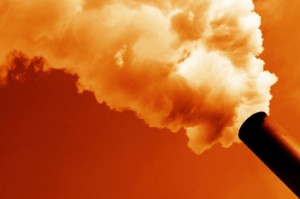Automakers Fear New European Clean Air Rules Could be "Fatal" To Auto Industry
 Facing growing concerns about air quality, global warming, and long-term energy supplies, European regulators have begun to debate the possibility of sharply tightening already-strict vehicles emissions standards – but senior automotive executives gathered for this year’s Paris Motor Show are warning such a move could be "fatal" for the auto industry.
Facing growing concerns about air quality, global warming, and long-term energy supplies, European regulators have begun to debate the possibility of sharply tightening already-strict vehicles emissions standards – but senior automotive executives gathered for this year’s Paris Motor Show are warning such a move could be "fatal" for the auto industry.
Manufacturers say they could, in fact, meet the rules some clean air advocates have been proposing. At least from a technical standpoint, but the cost could be substantial, especially for smaller carmakers, they warn. And of equal concern, industry leaders question whether consumers would be willing to accept the potential compromises or pay the higher prices they’d almost certainly face.
Europe already has enacted some of the world’s toughest clean air standards. Unlike the United States, which focuses on fuel economy, the EU has been targeting carbon dioxide emissions in an effort to reduce global warming. The current standard will be cut by about a quarter, to a mere 95 grams of carbon dioxide for every kilometer of driving by 2021, roughly equivalent to what a car meeting Americas 54.5 mpg fuel economy standard would have to meet in 2025.
But Brussels-based regulators are talking about trimming that to just 65 grams by 2025 – which would be the equivalent of getting 84 miles per gallon. To put that into perspective, even the Toyota Prius today manages to deliver just 50 mpg.
The Renault Eolab sips barely 1 liter of fuel every 100 km, and gets 37 miles per charge, and would be able to meet the proposed new Euro emissions rules.
Industry observers say that as tough as the proposed standards might be for the world’s largest automakers -- VW, Toyota, General Motors, and Ford among them -- tighter regulations would be especially devastating to smaller companies with fewer resources.
Industry critics remain skeptical of such claims. They are quick to point out that automakers have been raising the specter of doom and gloom since the first clean air rules were passed in the 1970s – but manufacturers have so far achieved substantial results, both in reducing emissions and in raising mileage.
And, indeed, manufacturers acknowledge they have not hit the wall. They continue to make gains by adopting new technologies, such as direct injection, turbocharging and more advanced transmissions. But they insist these systems won’t go nearly far enough.
 Facing growing concerns about air quality, global warming, and long-term energy supplies, European regulators have begun to debate the possibility of sharply tightening already-strict vehicles emissions standards – but senior automotive executives gathered for this year’s Paris Motor Show are warning such a move could be "fatal" for the auto industry.
Facing growing concerns about air quality, global warming, and long-term energy supplies, European regulators have begun to debate the possibility of sharply tightening already-strict vehicles emissions standards – but senior automotive executives gathered for this year’s Paris Motor Show are warning such a move could be "fatal" for the auto industry.